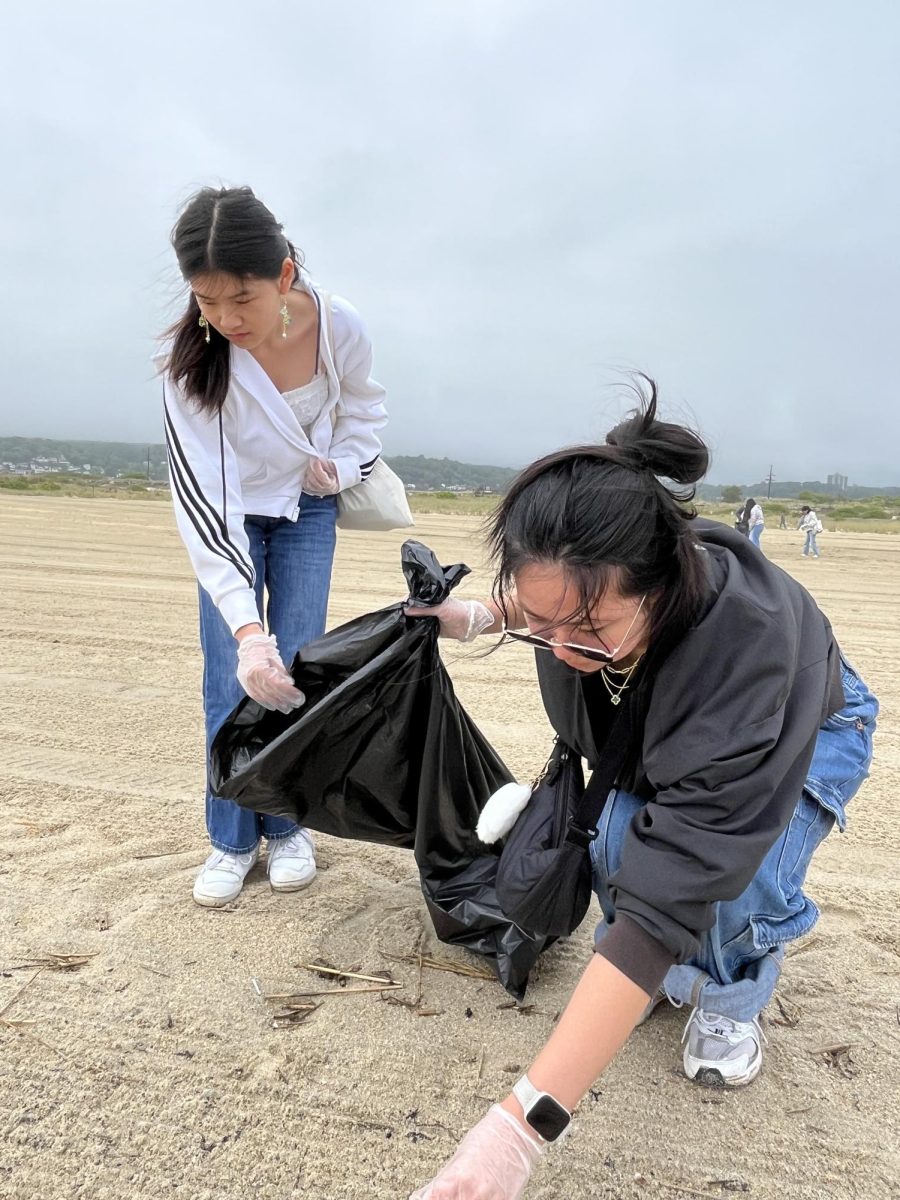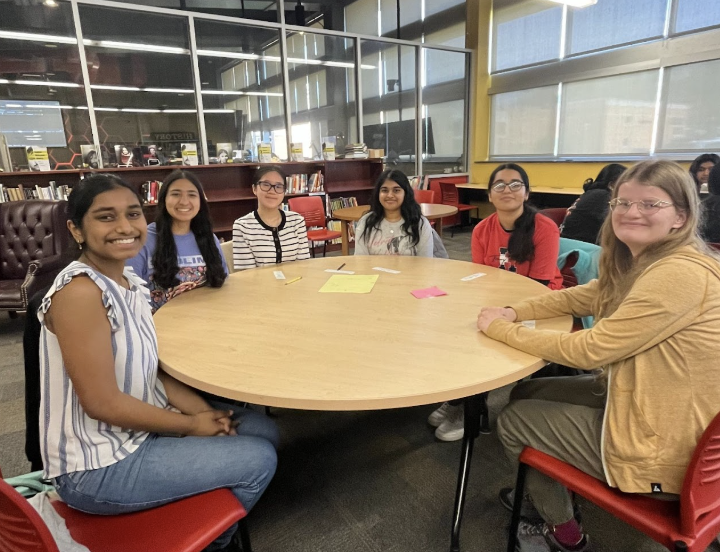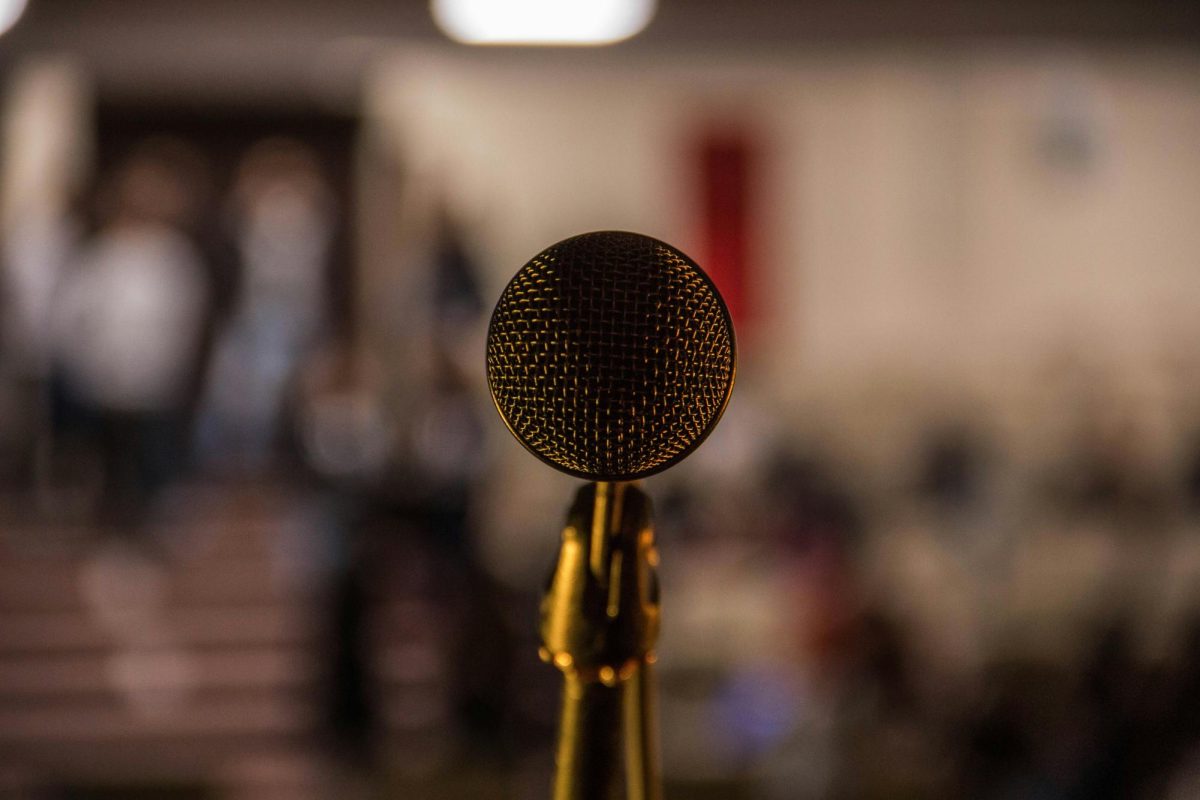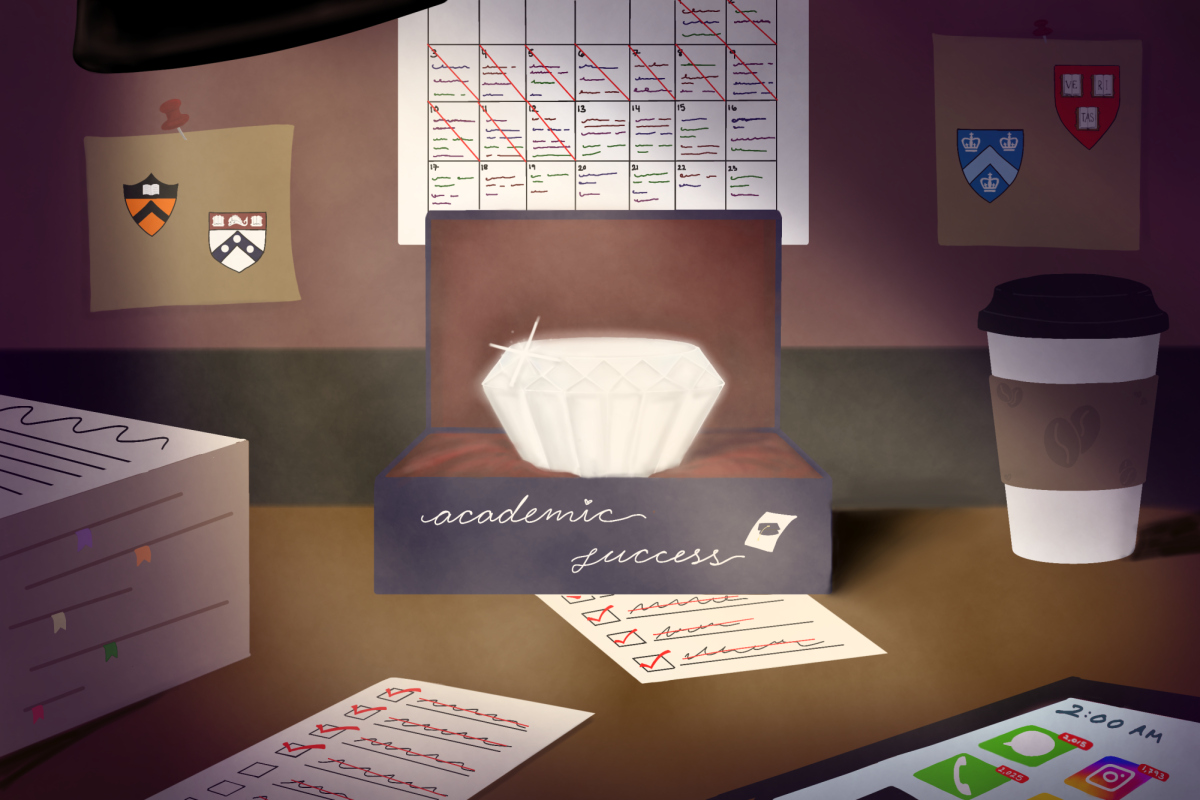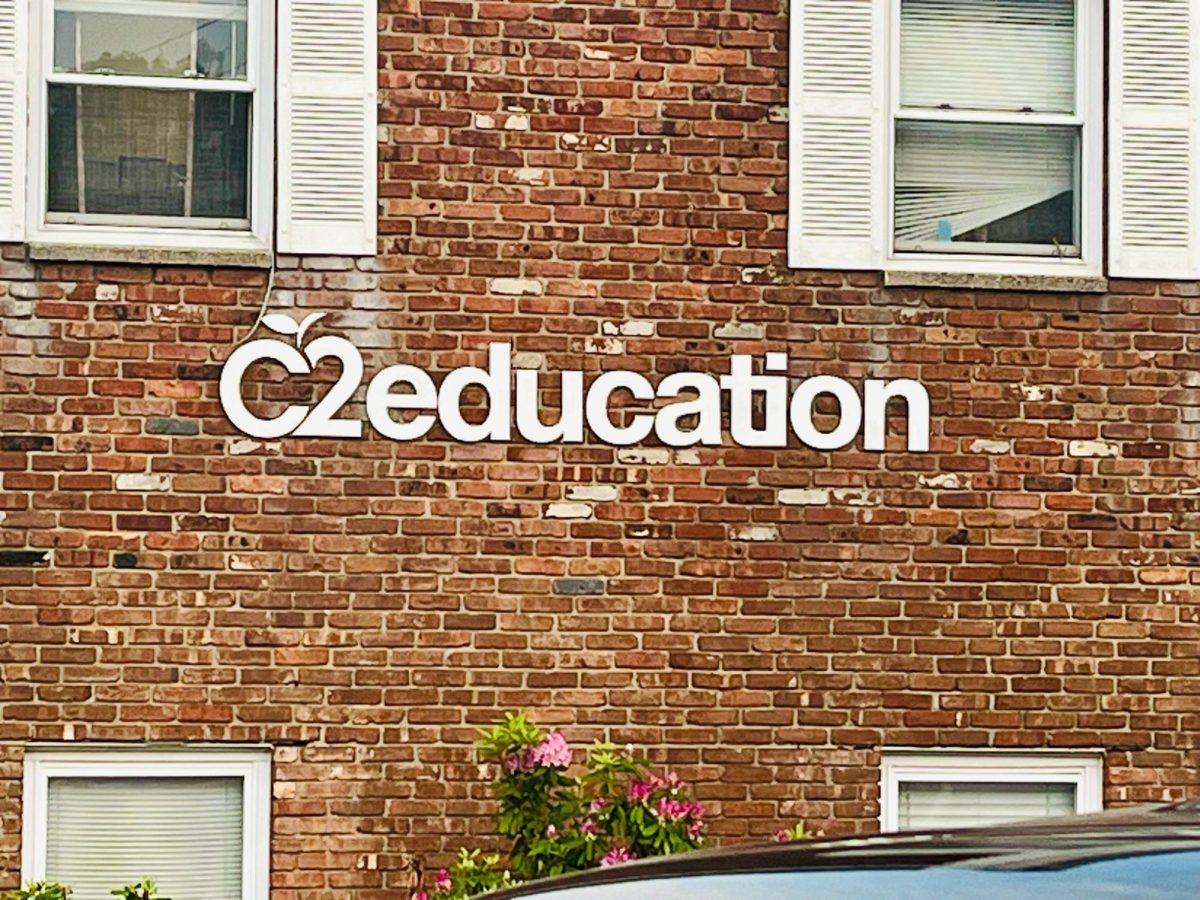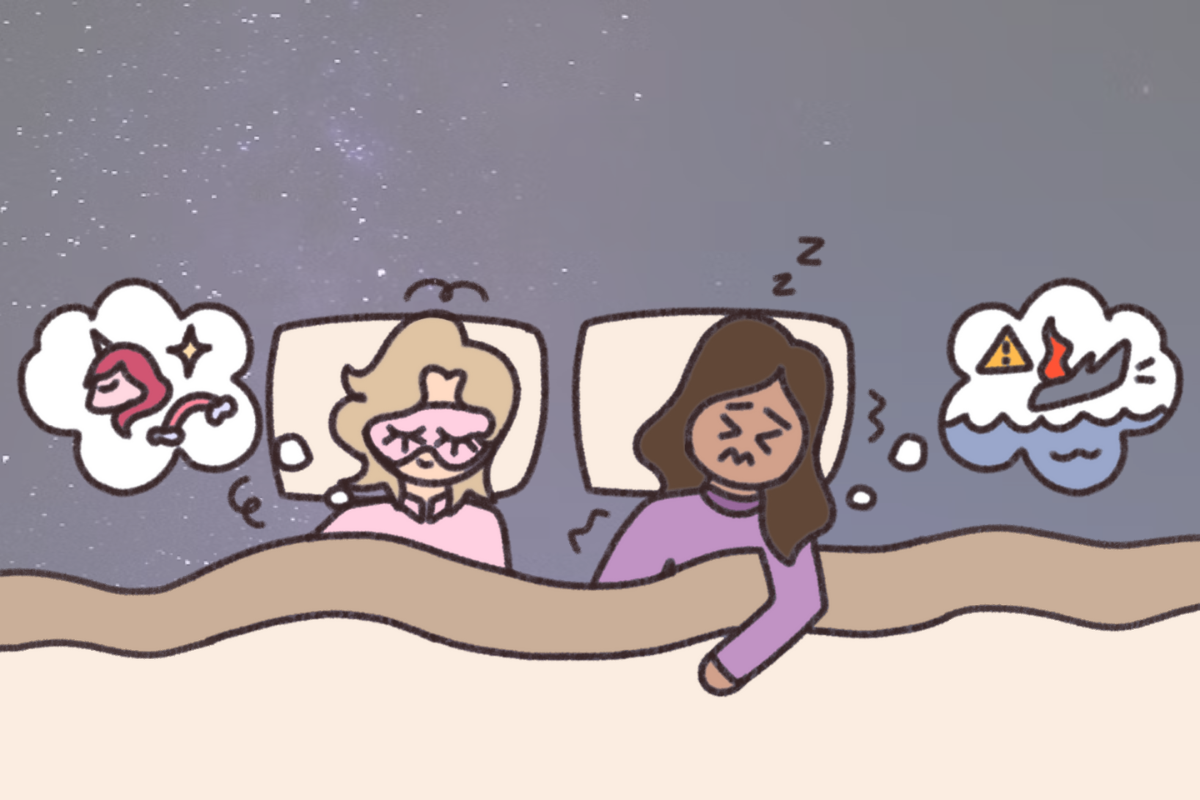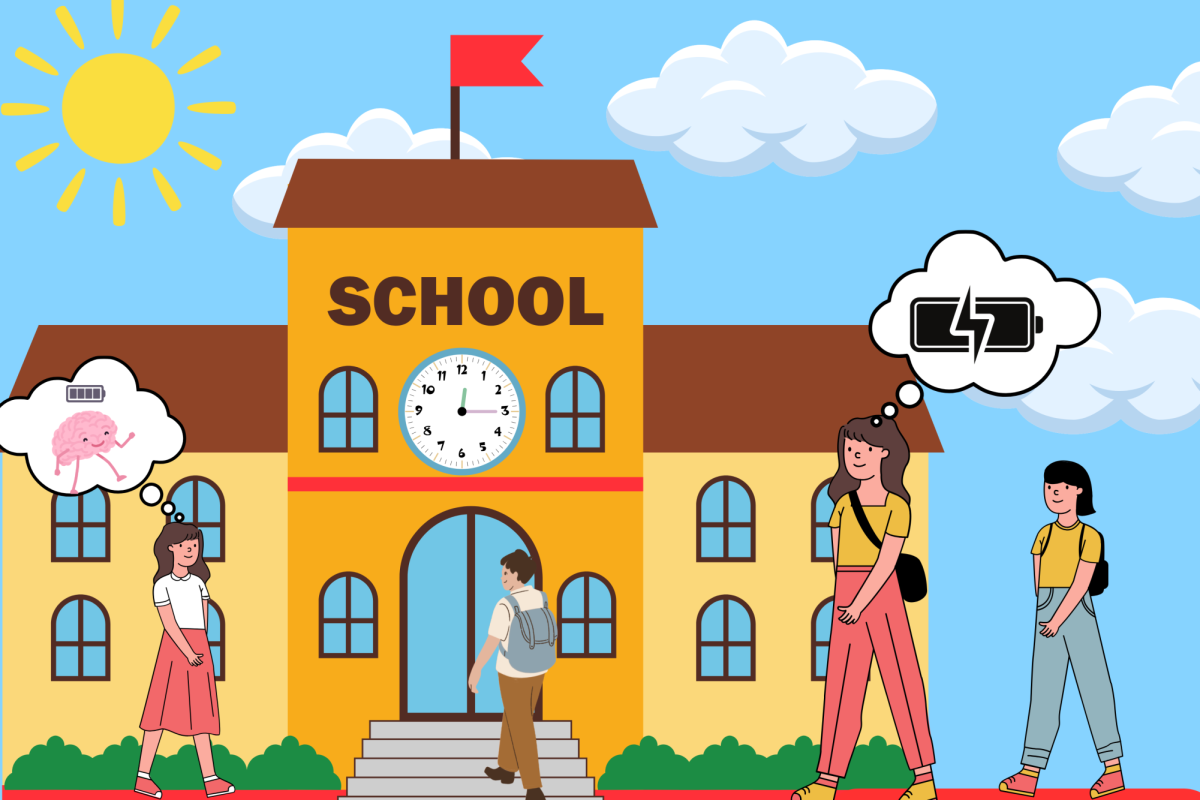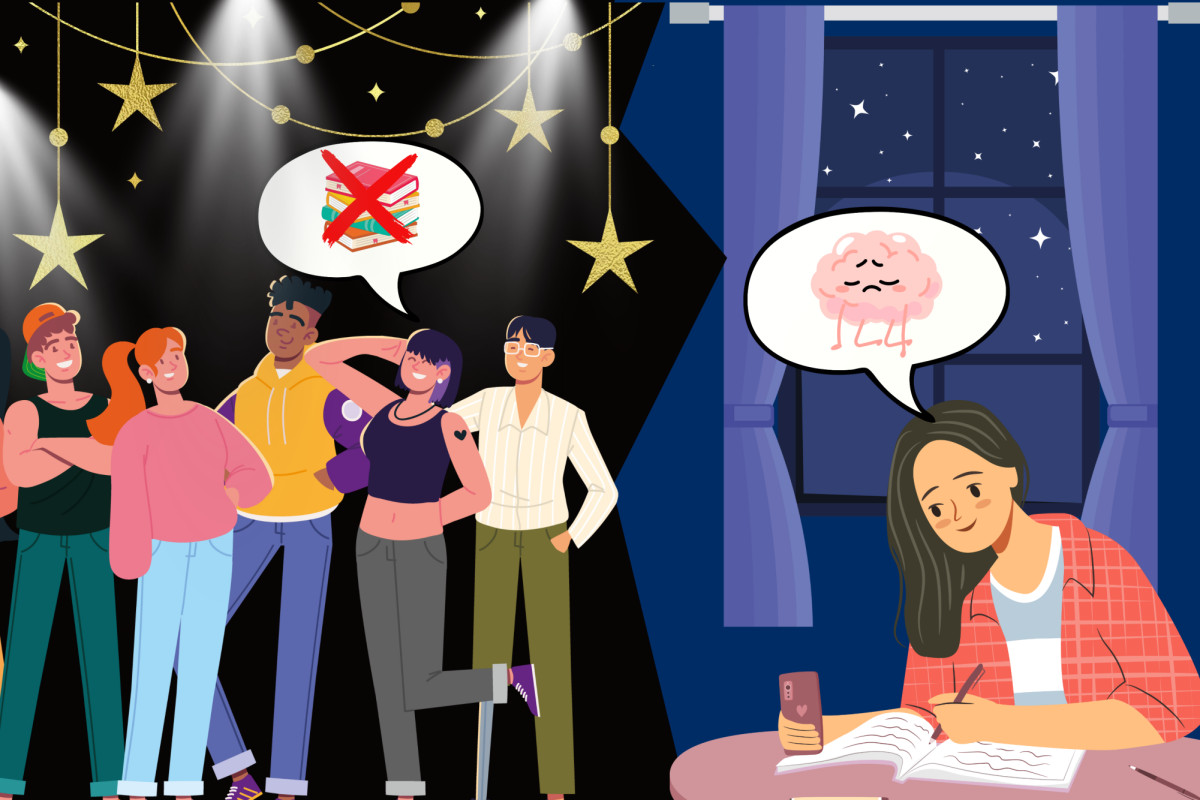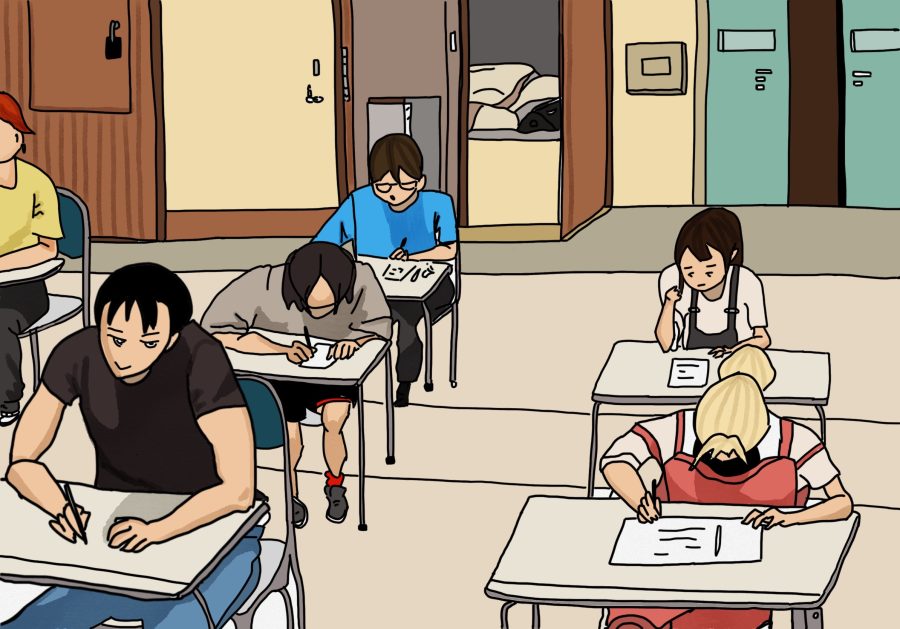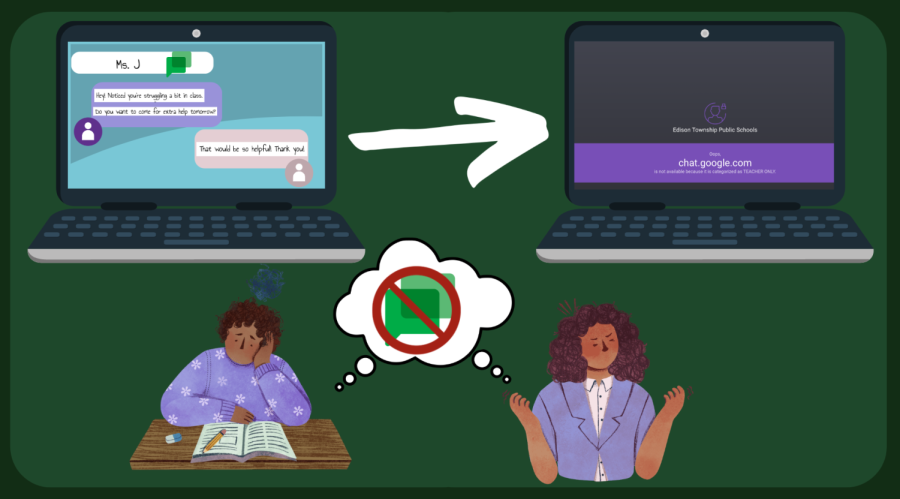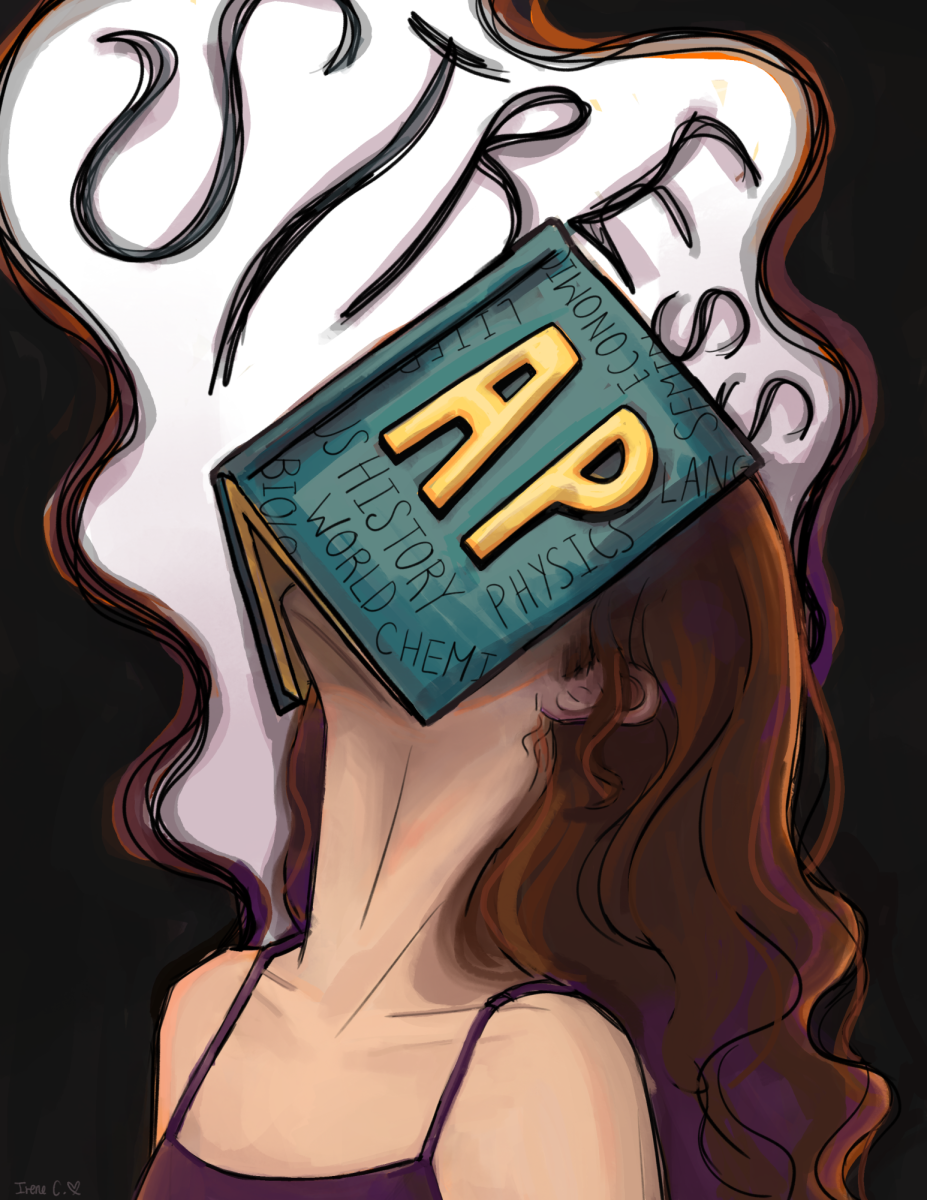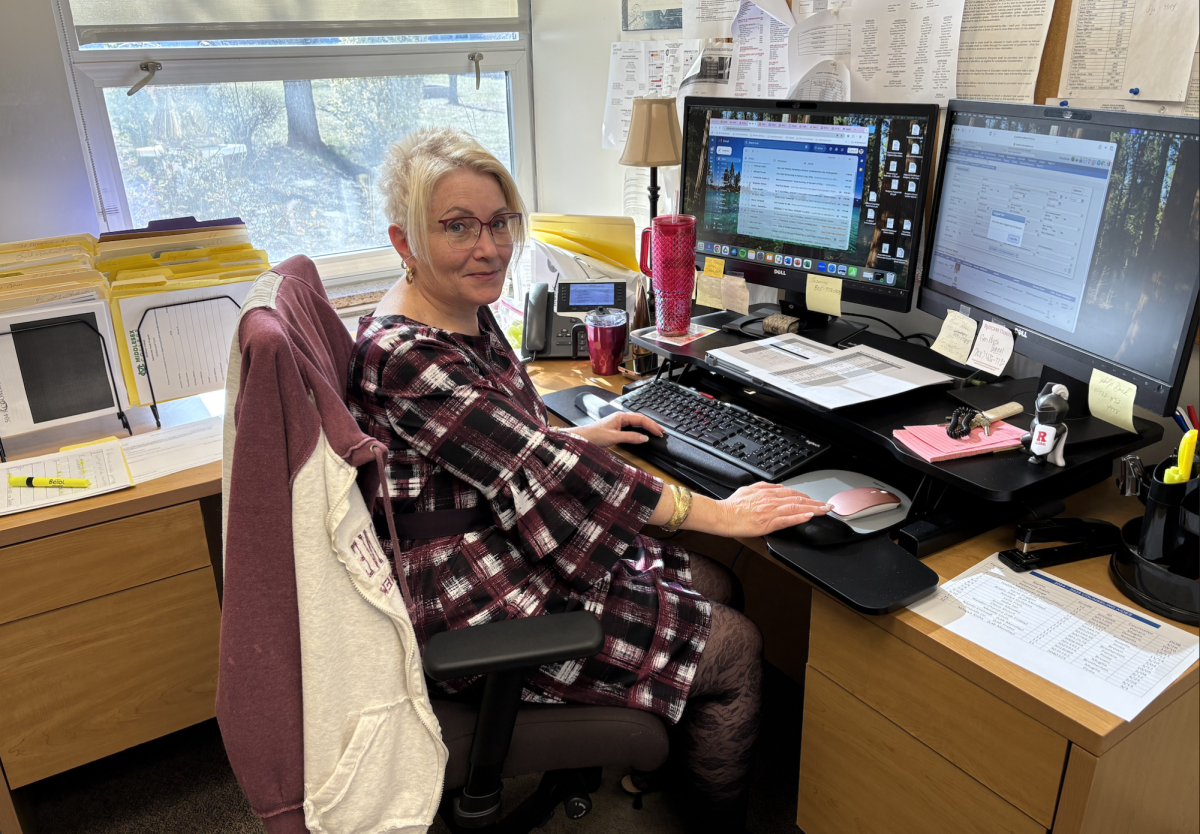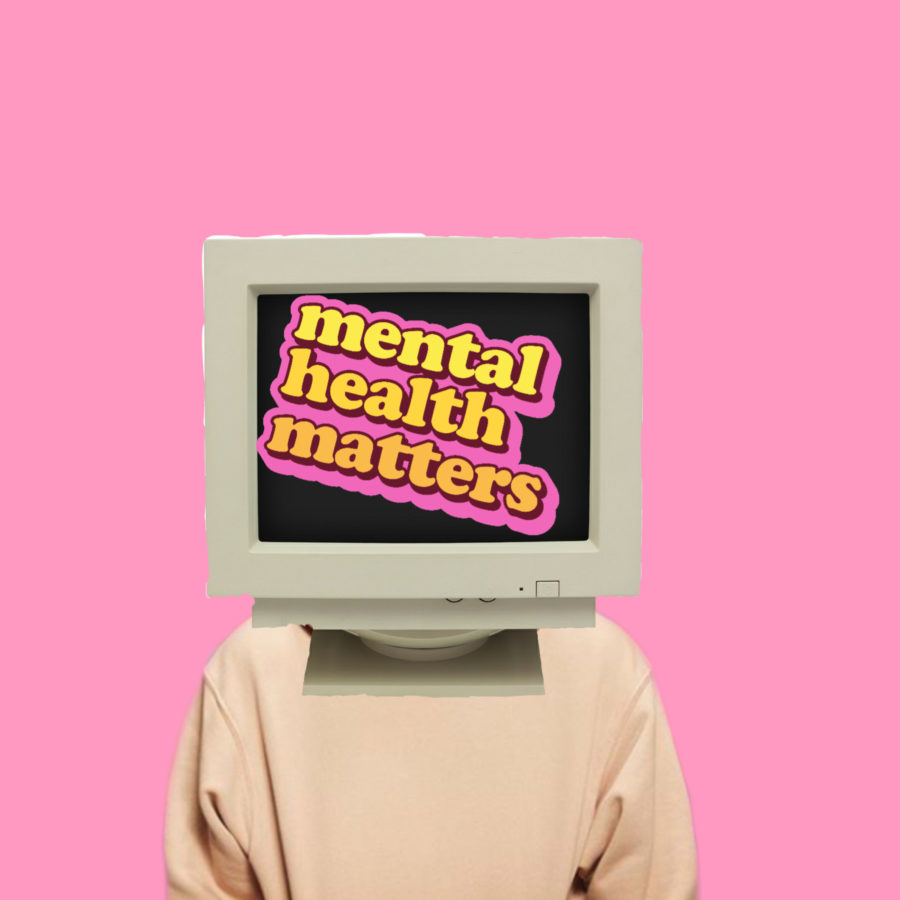Six Hours of Staring in Silence: Mental Health and Virtual Learning
November 25, 2020
Remember seven months ago, when we could sit together in a classroom or joke with one another in the hallways? Remember those late-nighters followed by an enthusiastic greeting from Mr. Ross at the front entrance? Remember the smiles we had on Fridays looking forward to electrifying football games, lively school dances, and spirited club events?
In a matter of months, we have lost all those pleasures, and chaos ensued amidst uncertainty. Like so many students across the country, today we sit in the confines of our bedrooms filled with the air of dismal silence and a sense of boundless emptiness.
Now, the stale blue light of a Macbook screen illuminates a messy bedroom filled with a forgotten backpack, dusty textbooks, and a pile of dirty clothes. We wake up only to repeat the same day over and over again: six hours of staring in silence.
With the lack of social interaction and human connection, many students struggle to find comfort in this new norm. The coronavirus pandemic has forced the education system to adopt remote learning, making the traditional high school experience a distant memory of the past. Even though schools have adapted to this new virtual environment, have the students followed?
In some ways, remote learning allows for more flexible life schedules.
“It made my daily routine a lot more low-pressure. I didn’t need to worry about commuting or planning meals because I was in the comfort of my own home,” Emily Heller ’21 admits. After all, with students conducting many club meetings virtually, extracurricular involvement has never been more convenient. Attending a meeting is now just one click away, a convenience decreasing stress levels across the board. Not to mention, students have been able to study with greater comfort: We can enjoy taking notes while in our sweats, nibbling on a snack, and not worry about our disheveled appearance.
However, the drawbacks of online learning have not gone unnoticed. Studying monotonously for six hours, students find fewer opportunities to explore themselves or embrace quality time with loved ones and friends.
English teacher Mr. Patrick McCaffery acknowledges that high school is a critical development stage for the socialization of students.
“Teenagers, typically, are at a stage of figuring out who they are and how they fit in the world. To determine those very important things, people usually spend a lot of time with other people, ‘experimenting’ with selves and roles. They try out relationships and behaviors. Most of this interaction comes at school and during school hours,” McCaffery states. Even though students may have adapted to new schedules, technical difficulties, and digital communications, this change still takes a psychological toll.
With classes, homework, projects, extracurriculars, college applications, and recreational activities all being online, students never find time to escape their computer screen. The demands of their digital lives force them to sacrifice the pleasures of their personal lives. Essentially, technological overstimulation deteriorates students’ mental health. Persistent academic demands restrict students from having the opportunity to rest and recuperate for the next day. Now, considering that each school day looks the same—log in, camera on, mic muted, log off—apathy sets in.
As a result, many students struggle to salvage remaining bits of motivation. Productivity culture pressures students into feeling guilty for not doing “enough,” just as pandemic fatigue is settling in.
“It’s hard to find a balance between when I should do something to cool off or fun versus work on something for school,” confesses Kyle Napp ‘23.
Because online school is accessible anywhere and anytime, we feel obligated to use our free time to focus on academics rather than ourselves. Despite being in the midst of a global pandemic, nationwide social movement, and historic presidential election, teachers still expect students to perform just as well academically as if these circumstances were normal.
Learning in such a stress-inducing and anxiety-ridden environment prevents students from enjoying their high school experience—even if it’s virtual. Students have reported that teachers should consider checking in with their students to ensure that they are maintaining good mental health. By increasing communication between teachers and students, the school community could start a healthy discussion about what’s working and what’s not.
“It’s a lot harder to learn virtually even with everyday classes, because in essence we are still teaching ourselves most of the material,”Keya Raval ‘22 admitted. Ultimately, remote learning is still a work-in-progress. However, introducing improvements from student and teacher feedback would help to amend current issues with the schedule, workload, and teaching techniques.
Perhaps our past experiences with this pandemic can teach us a new step to approaching our education. The block scheduling used from March to June gave students more time to ourselves throughout the day and more time to complete assignments. More importantly, block scheduling allowed students to have time to reconnect with others.
Education over-relies on standardized tests, online assessments, and grades. We need moments of connection, moments to talk to friends, discuss with teachers, and commit to ourselves.
While mental health’s effects on our lives take their toll in varying degrees, it is important that we take action to ensure that we can get through these tough moments. This pandemic, along with the complications of remote learning, is a turning point in our lives that we can embrace if we take the right perspectives.
In the meantime, Heller reflects on the remote learning experience.
“It sucks to miss out on these memories. I can’t deny that. But I don’t mind giving up a few months of my time if it means saving a hundred thousand lives,” she said.
For more information on mental health, visit https://www.mentalhealth.gov/.



